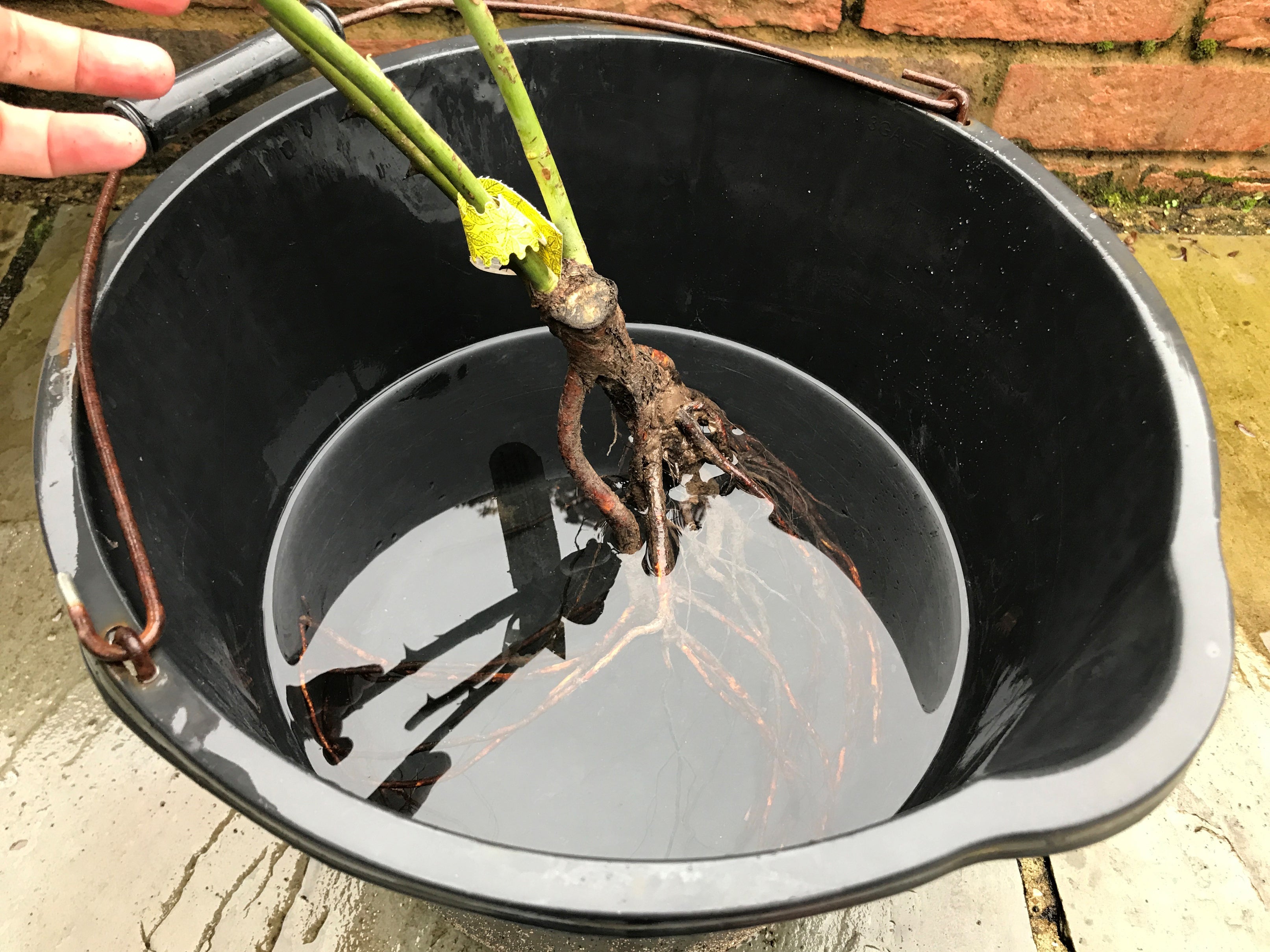Why gardeners should be buying bare root plants
There’s a good choice of bare root specimens

There’s still time to buy roses, fruit trees, hedging and perennials as bare root plants – which means they’re not as pretty when they arrive as they won’t be in flower, but given a bit of time to adjust, they should steal a march on spring and summer.
Bare root plants are also much cheaper than potted ones. They are grown in fields and then lifted by their roots and sent to customers – not in plastic pots full of compost but often in biodegradable wrapping, which keeps the roots intact.
They are generally available from late winter to early spring, before bursting into life when the weather starts warming up – unless the nursery you buy your perennials and deciduous shrubs from has a cold store, which enables the plants to be held back, so you might be buying bare root specimens as late as April or even early May.
Here’s why bare root plants are the way ahead for budget-conscious gardeners…
1. They cost less
“They are a very economical way to buy plants because they are raised in fields rather than pots, where you have the cost of the pot and the potting media and you need more water and fertiliser,” says Guy Barter, RHS chief horticulturist. “They are usually cheaper than the equivalent potted plant.”
Morris Hankinson, managing director of hedging plant specialists Hopes Grove Nurseries, reckons customers can buy native bare root hedging plants for around a quarter of the price of potted ones.
2. They are environmentally-friendly
“They are very favourable because growing in soil is, all things being equal, more sustainable than growing in potting media. Even peat-free potting media has its costs of transport, costs of manufacture and the plant still needs a lot of fertiliser and water,” says Barter.
Hankinson adds: “They are also much lighter in weight, so they are so much more portable.”
3. Packaging may contain less plastic
“They usually arrive in a bag with some sawdust in it. Some suppliers now are producing biodegradable plastic bags, which go in the compost bin, and it’s worth looking at those,” Barter suggests.
4. They can get a better start in the garden
Barter says of roses: “The plants find it difficult to root into the soil from the artificial medium of, say, a potted plant, but if they’ve been raised in the soil they root very readily. Although they may have fewer roots and those roots may have been shortened, they usually root very quickly and are often easier to get established than potted plants.”
5. There’s a good choice of bare root specimens
Roses are the most obvious ones – and will flower in their first year of planting – but also peonies, agapanthus, hardy geraniums, Alchemilla mollis, fruit trees and hedging, including the native hawthorn, blackthorn, hornbean, hazel, euonymus and guelder rose, can all be bought as bare roots.
“Fruit trees and bushes are particularly good for bare root because they are very resilient and there’s usually a substantial saving of about 30% compared with the potted version, and you usually get a bigger, better plant because plants grow better in the field than they do in pots, by and large,” Barter says. “Strawberries are vastly more economical to buy as bare root runners. They are expensive in pots.”
However, some won’t take as bare roots. These include escallonia, ceanothus, choisya, lavender, pittosporum and Viburnum tinus, says Hankinson.
Planting advice
It’s best to get bare root plants in the ground sooner rather than later, if the ground isn’t frozen or sodden, Harkinson advises: “The later you plant bare root plants in the season, the more prepared you are going to need to be to water them and tend to them.
“With deciduous plants, if you plant them in November, they’ve had all winter for the roots to establish, so when they start growing they are already set, whereas if you put a cold-stored plant in in May, it comes out of three degrees and maybe goes into 23 degrees. Without the roots having had a chance, you’ve really got to nurture them.”
Don’t plant bare root specimens too deep, Barter notes, but make your planting hole wide enough to give roots plenty of space to extend outwards. Peonies resent being planted too deep, so it’s important to keep the top of the peony roots (the crown) no more than 5cm (2in) below the soil surface, he advises.
Gardeners at RHS Garden Wisley plant roses so that the graft (the swollen area underneath the stems and above the roots) is at ground level.
Rose specialist David Austin Roses recommends soaking the roots in water in a bucket for several hours before planting to ensure they are fully hydrated when they go into the ground. “You need to firm the soil around them, mulch the plants and they will need watering in dry spells in early and late summer,” Barter says.
Subscribe to Independent Premium to bookmark this article
Want to bookmark your favourite articles and stories to read or reference later? Start your Independent Premium subscription today.

Join our commenting forum
Join thought-provoking conversations, follow other Independent readers and see their replies